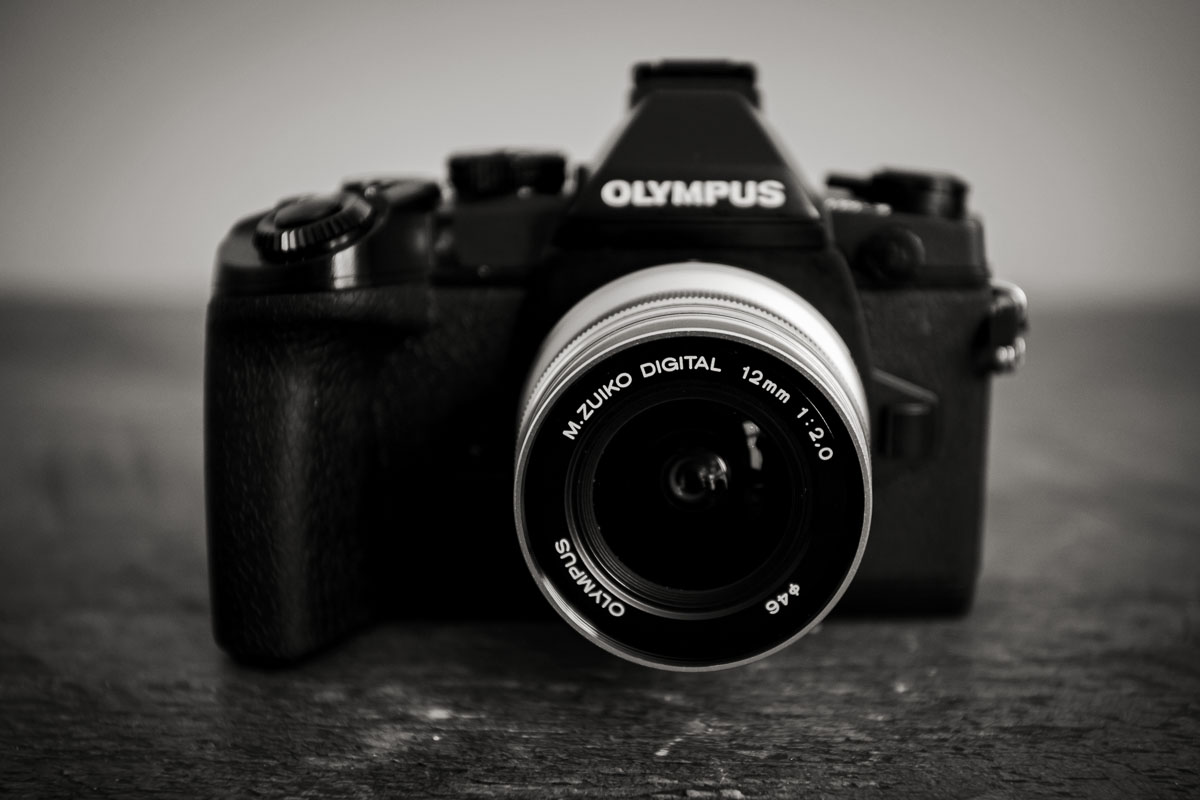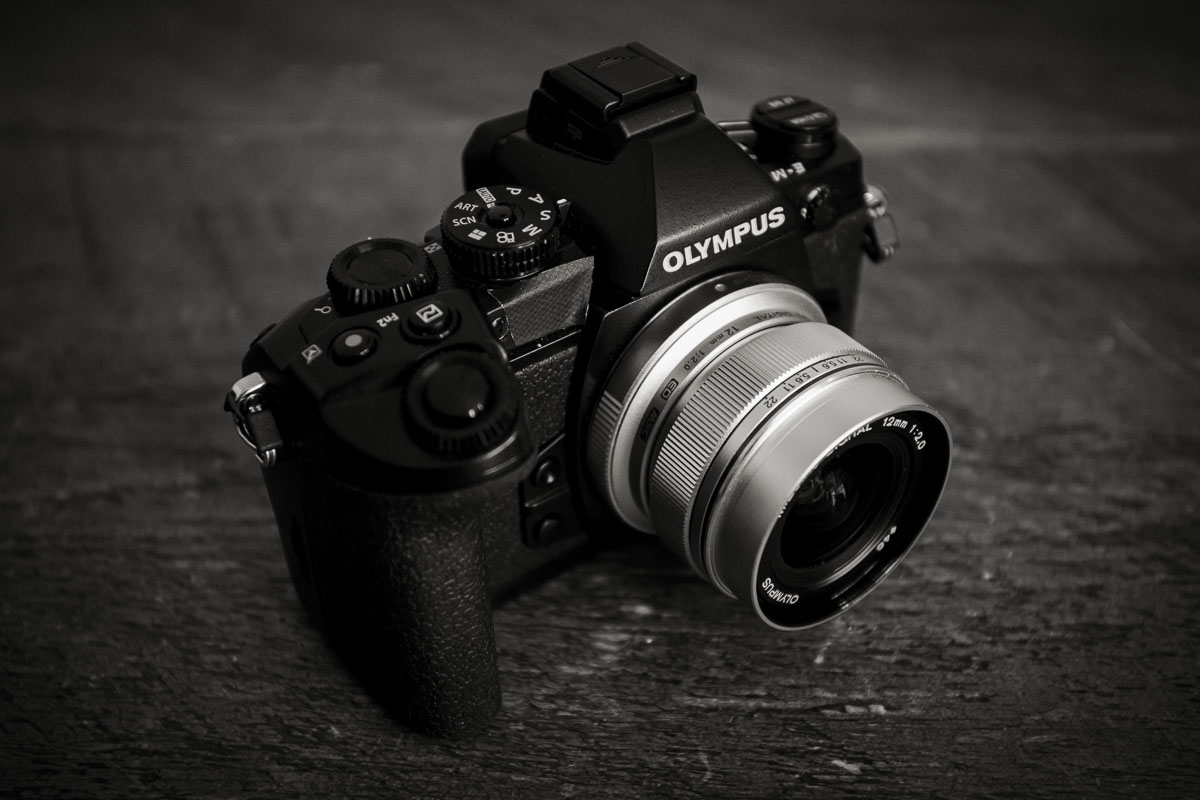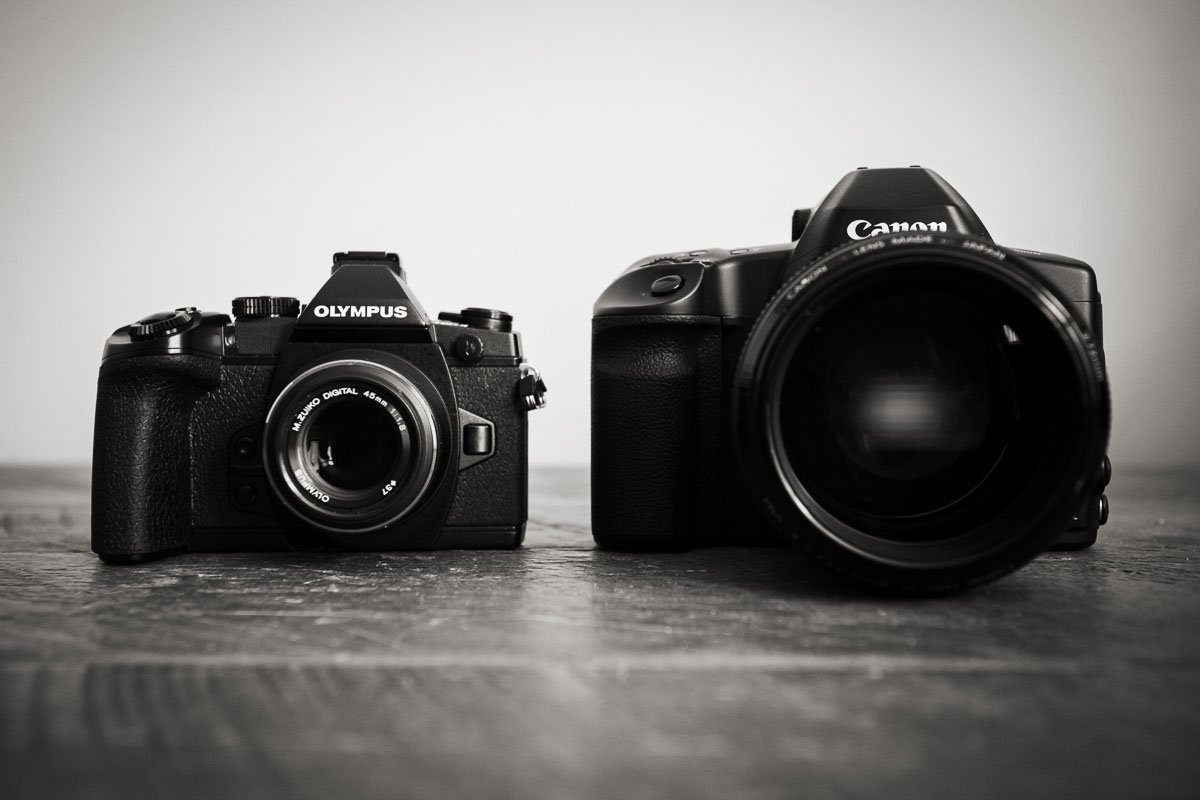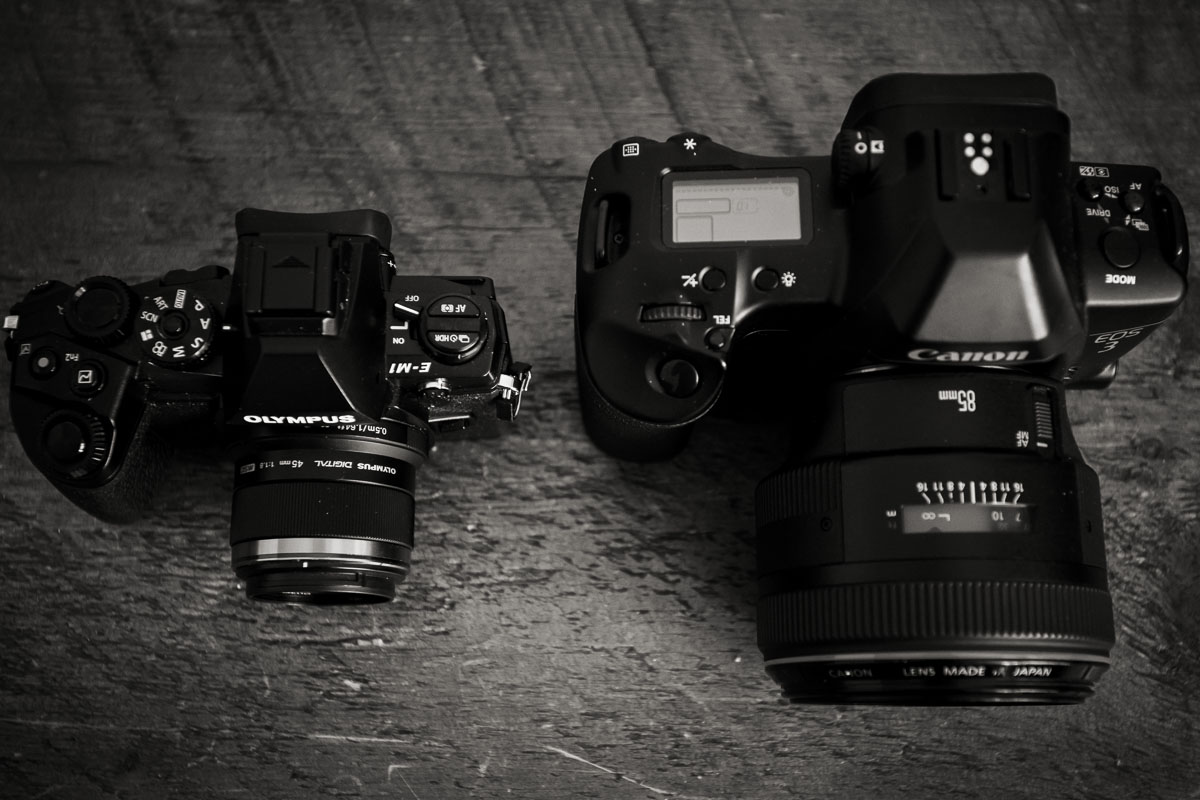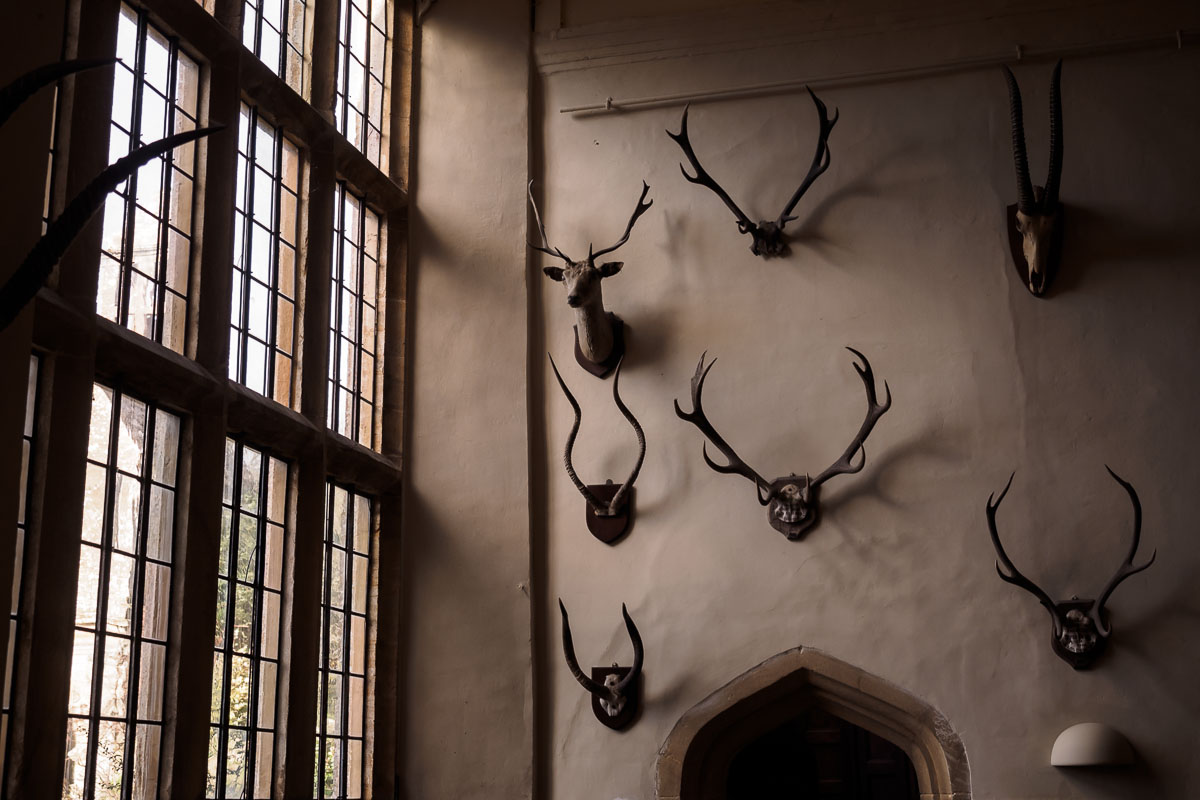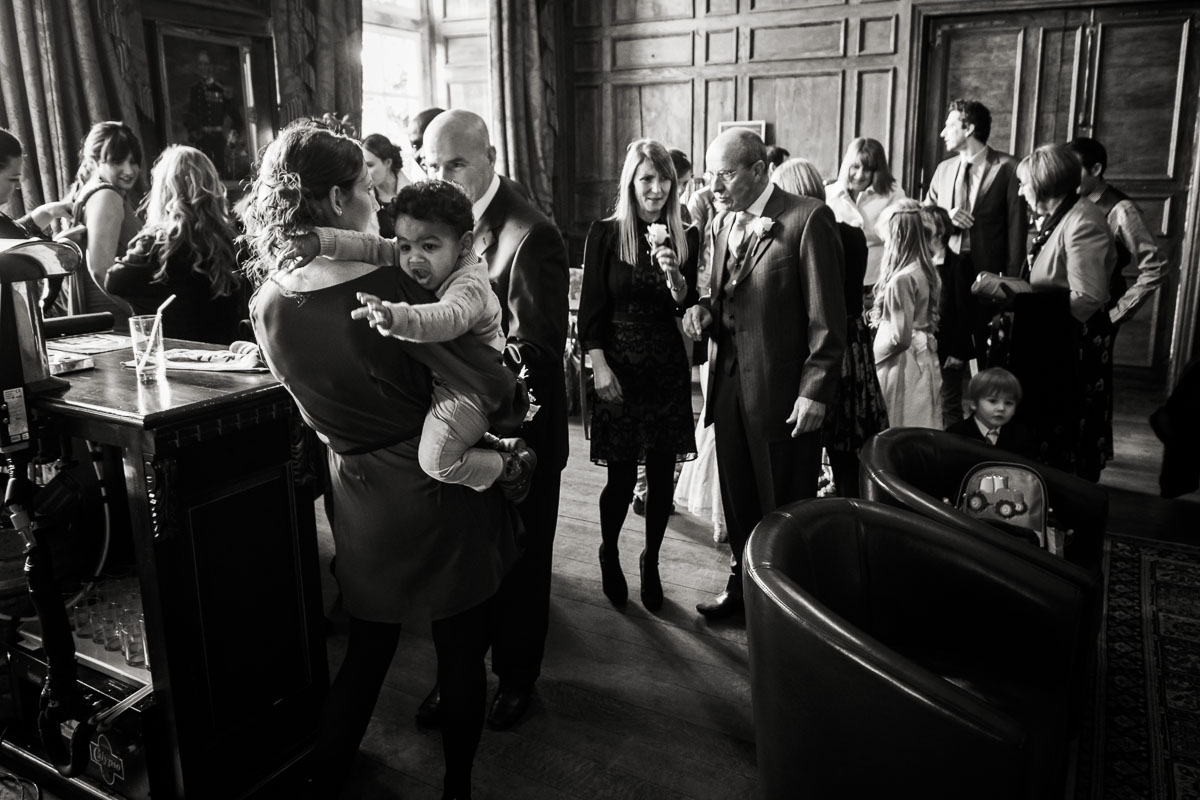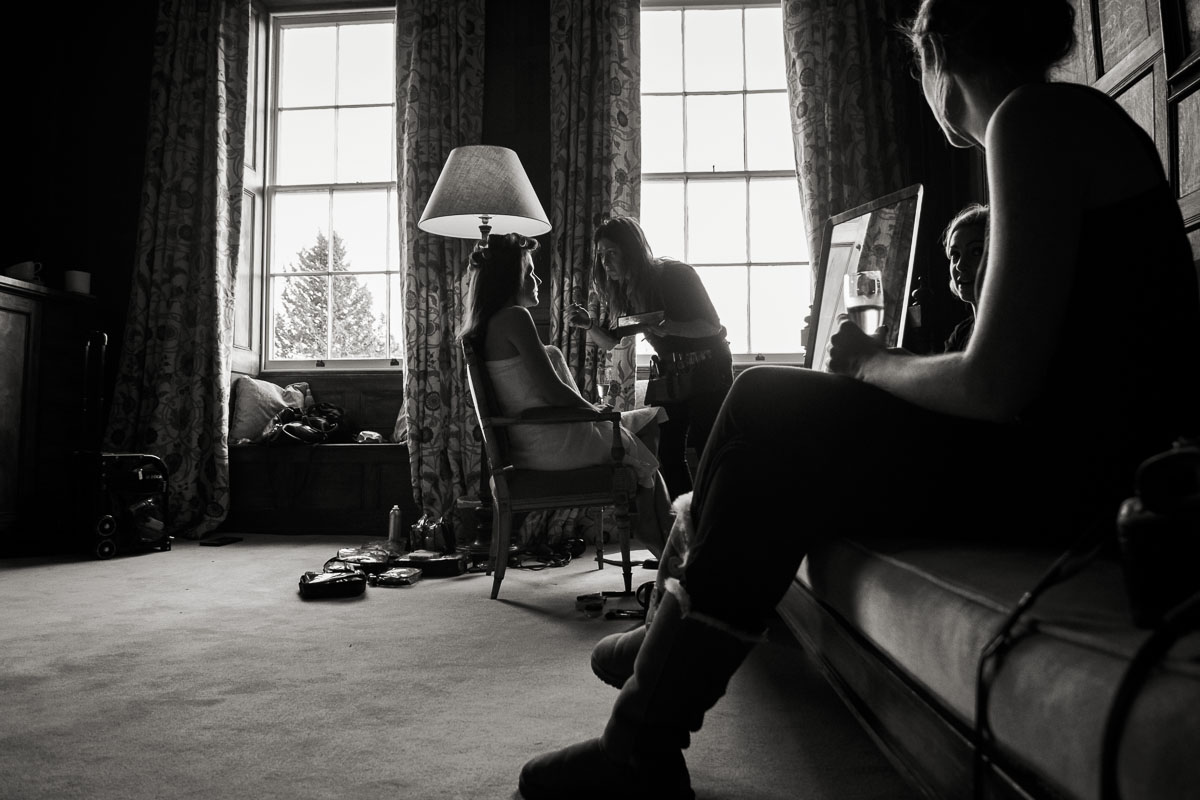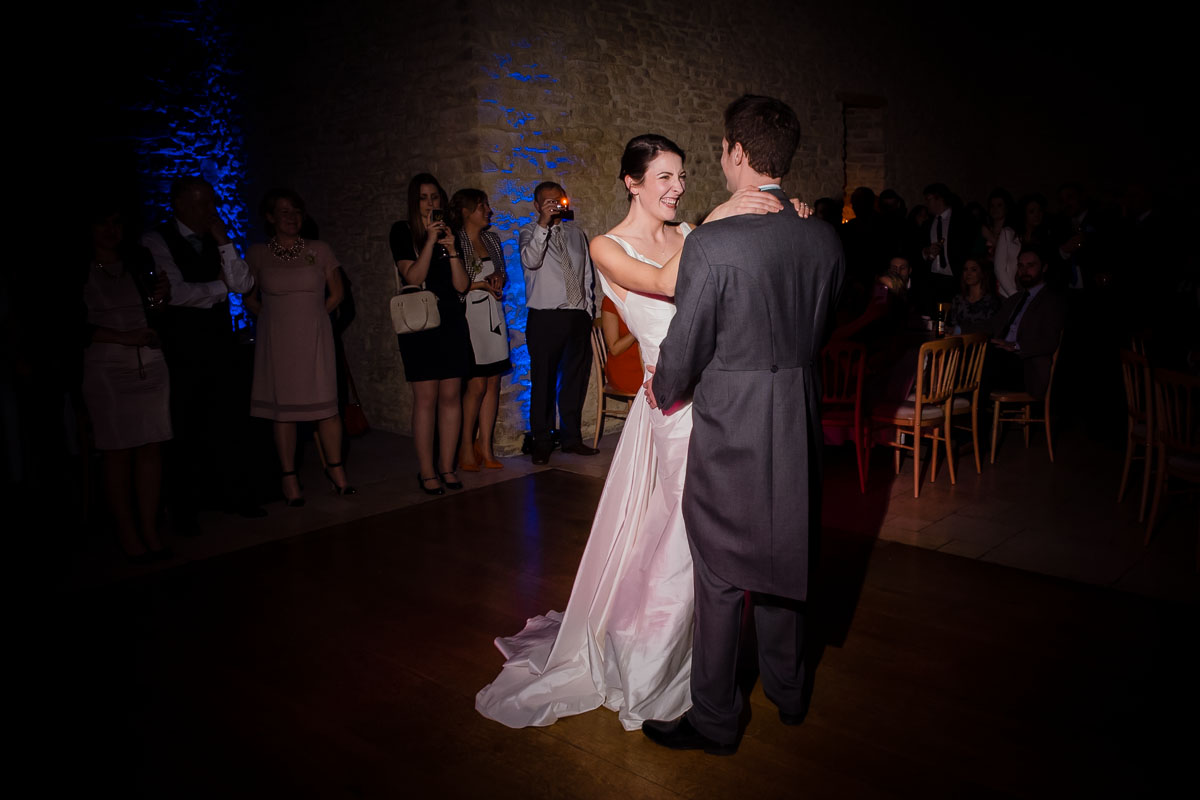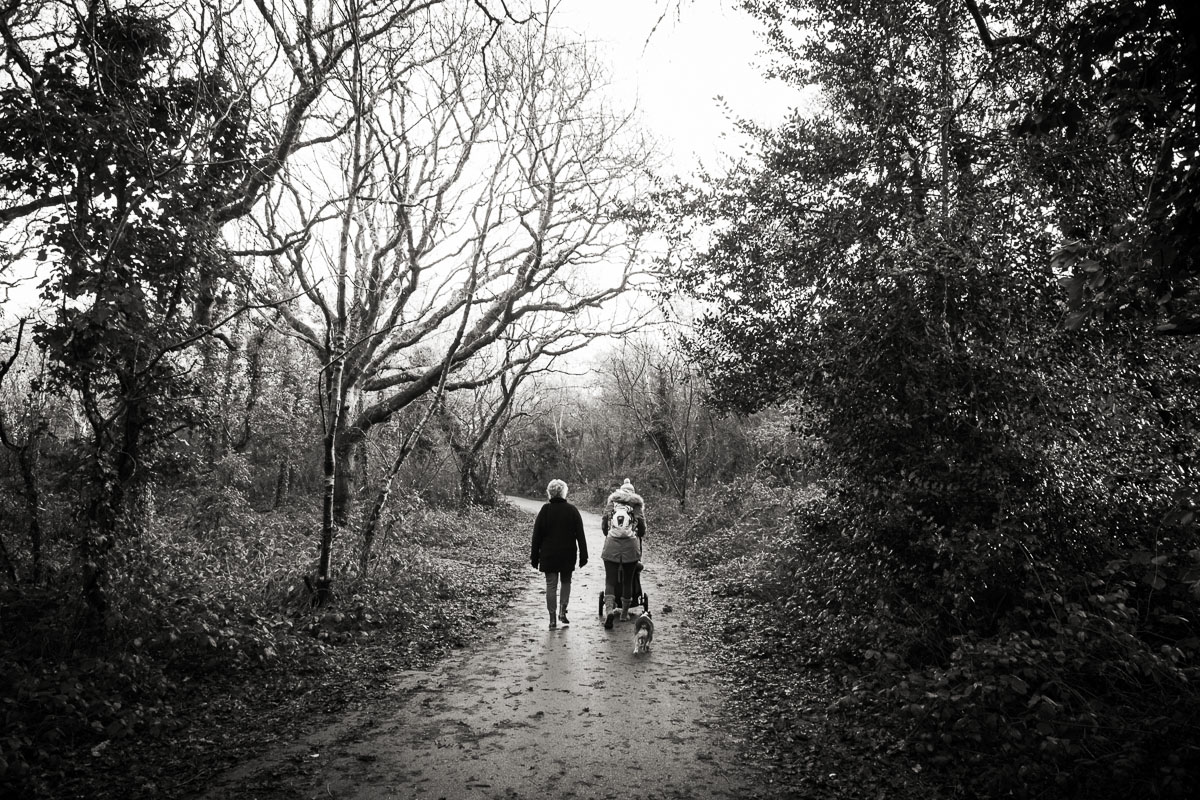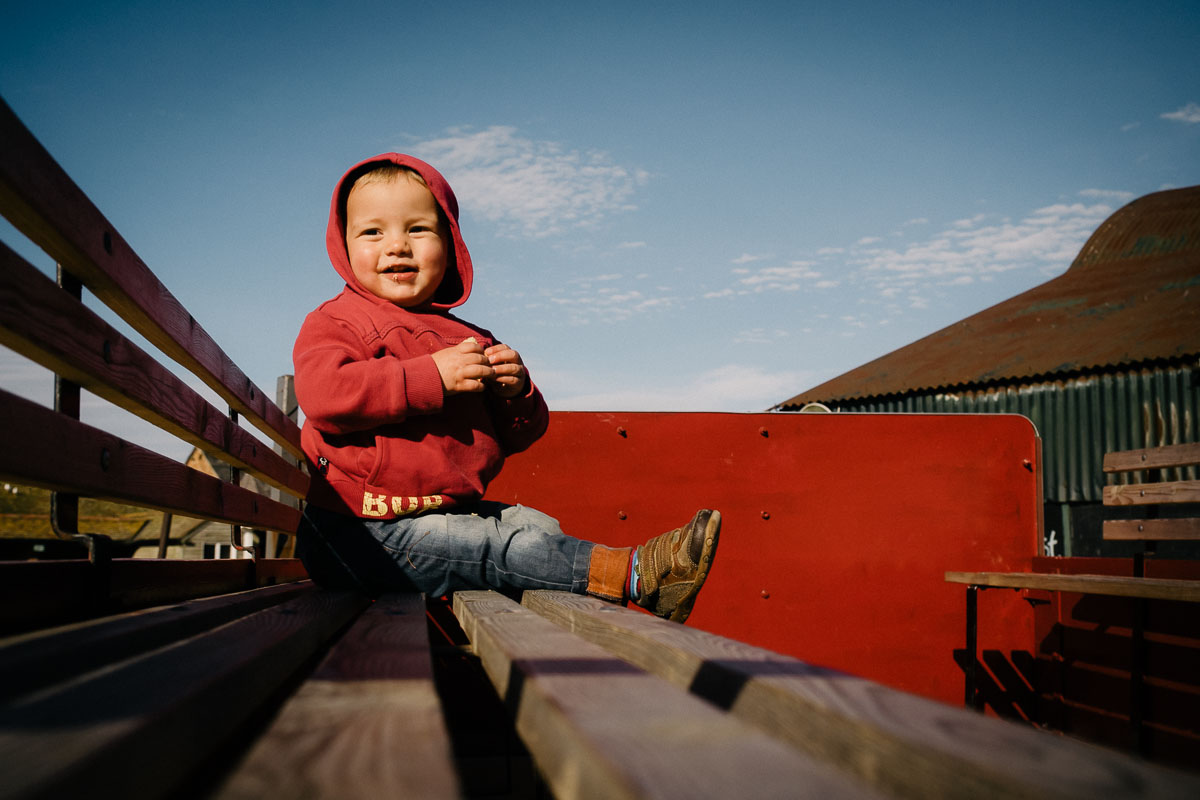Professional Wedding Photography using the Olympus E-M1
I’ve been using mirrorless or ‘Compact System’ cameras (CSCs) in a professional capacity for 2 years, as a supplement to my main working rig of dual SLRs with a set of fast primes. Starting with the Fujifilm X-Pro1 and then the Fuji X100S, I used them at a variety of commissions over that time and grew to enjoy the slower way of working. This was necessary due to technical capabilities, but beneficial by bringing a more considered and thought out approach to photography.
I know of others who made the move completely to mirrorless systems, and used them extremely effectively in that regard. For me though, it was never a viable option. I was accustomed to the exceptional low light, high ISO, superb autofocusing capabilities of my Canon 5D Mark 3s, and also aware of some of the challenging lighting situations I regularly operate in. A large number of my weddings are in the winter months with a lack of natural light, but it has to be said many venues add their own challenges to lighting with an abundance of nasty mixed light sources to contend with.
In 2013 my interest in using mirrorless systems with their reduced size and weight, shifted from being an enjoyable creative difference, to something of a necessity. During my most intensely busy month which included 5 weddings back-to-back over 5 days, and a 15 hour shoot with barely a break, it became apparent that using the dual SLRs with heavy fast glass was having an effect on me physically. I developed shoulder and back problems which were worsened on shooting days and required (require) ongoing treatment to manage.
In November I decided to re-assess my options for a lighter weight working camera option for weddings. I considered moving to a single body with a zoom (didn’t think on that too long) but was more interested in the mirrorless options and how technology had progressed since I’d first started using the systems. I had a pretty good handle on where Fuji were with their kit, and my view was that it was still not quite right for me. Whilst they had made huge advances with their focussing, it was still the area of letdown for me along with some doubts over build quality and usability.
THE OLYMPUS OPTION
I’d heard and read great things about the Olympus O-MD cameras (the E-M5 and E-M1) and had experienced how well the focussing performed on the Micro Four Thirds system which they use. Where I had doubts – or maybe preconceptions – was regarding how the smaller sensor size would handle noise, and missing out on the full frame look I was used to.
On that last point around the look or shallow depth of field with full frame, this is something that appeals to many with those cameras, yet for my documentary style of work I am more often than not now trying to obtain more depth of field in an image and having to stop down my fast primes to do so.
Shooting at f/4 and higher had become necessary for a lot of the multi-layered images I try and produce. On a full frame camera, this often means bumping up the ISO which is why I was so regularly going to 12800 and above in some of the darker environments I work in, particularly in winter. With the smaller sensor in Micro Four Thirds, the depth of field is considerably higher which actually opens up a new level of potential for me.
So I purchased the Olympus E-M1 – a camera aimed at professionals with excellent build and a huge array of potential lenses to choose from. My kit came with the 12-40 f/2.8 zoom lens (more on that later), and I added two primes to accompany it: the Olympus 12mm (giving a full frame equivalent of 24mm) and 45mm (90mm equivalent).
I was immediately impressed in just about every regard. I’ve mentioned the build quality and it really is exceptional. The camera is small but feels solid and very well put together being fully weather sealed, freeze and shock proof. It has plenty of physical controls and can be customised in just about anyway you would want. The ergonomics are excellent; the size and weight are a welcome difference. So much smaller than the big Canons! These images are of the E-M1 next to my EOS3 film SLR which itself is smaller than my usual 5D3 (which was taking the first 4 images on this post).
That massive chunk of glass on the front of the Canon is the 85L f/1.2. It is a superb feat of optical engineering and one of the best lenses available. It also weighs a ton, costs £1700 and is not what you’d call speedy in focussing. The little black lens on the Olympus is the 45 1.8. It has a similar field of view to the 85mm, yet weighs next to nothing, costs 1/8th of the 85L and focusses almost instantly. I’m not going to attempt to claim it produces the same sort of images – it absolutely does not and cannot – but consider all those other elements and you have a very compelling alternative.
From this point on, everything on this page was made with the Olympus. It is mainly wedding photographs, with some personal at the end.
AUTOFOCUS PERFORMANCE
One of the main concerns I had about mirrorless systems from past experience was autofocus performance. The Olympus is a revelation, not just comparing to other mirrorless systems I’d used, but against DSLRs as well. Fast, accurate, easy to use – it is brilliant. I compared focussing speed in various conditions with the 12-40 lens to the Canon 5D3 + 35L and in many circumstances the Olympus was actually faster. I don’t normally like using zooms as prefer the fixed focal length, smaller size and (often) better image quality of primes, but the 12-40 is a superb lens and it’s the one I leave on the camera every day in case I just need to grab it.
Image quality is superb with excellent dynamic range and subtle transitions in both shadow and highlights. It does well at the very high ISOs but is not comparable to the 5D3. It’s not fair to even expect it to be – you can’t argue with physics! – and this is one of the key trade-off decisions when thinking about this kind of camera system. I have no issues using it up to ISO 6400 and have actually delivered client images at 12800. Yes they’re a little noisy and can require some slightly different processing, but it is a pleasant grain and there’s still good detail in the images. I’d compare it to full frame cameras from 4/5 years ago, and that’s no bad thing at all.
I’ll quickly mention some other things I like about the camera but won’t go into them too much as there’s plenty of reviews around that do. Firstly, the electronic viewfinder (EVF) is the best I’ve used and I actually prefer it to the optical finder of similar size in the 5D3. Why? Because I can see what I’m getting in the image before I trigger the shutter. No more chimping for exposure or wondering if the capture was correct – it’s all there in the eyepiece, as I shoot. Fantastic. The tiltable touchscreen also is a useful feature and something I love to use when shooting for personal work such as street or with my children. Hold the camera low, see something you want to focus on, touch the screen in that place and *click* the camera focusses and fires the shutter instantly.
The other thing that deserves specific mention is IBIS – In Body Image Stabilization. This is something that the Canons don’t have, the Fujis don’t have, and nor do myriad other cameras. It is nothing short of incredible. The image sensor ‘floats’ in the camera body and is electronically shifted in 5 axes to counter movement of the camera body and person holding it. It is superb technology that limits the need to use higher ISOs in a lot of scenarios; the only restricting factor being subject movement. Truly it is an excellent feature and strong selling point for Olympus.
CONCLUSIONS
So on to the million dollar question of whether it could replace my dual SLR setup: yes I think it could – in fact it will – with a slight caveat, and an ironic twist. Remembering the key criteria for me were speed of operation, focussing speed and accuracy, low light performance and image quality, I’ve used it in some of the most challenging situations it could come up against – at UK weddings throughout winter – and have yet to feel it couldn’t do the job.
On that basis, I am buying a second one and adding to my lens lineup to give a classic dual body / prime lineup of (in full frame equivalents) 24, 35, 50, 90mm focal lengths. The caveat is I’m keeping a 5D3 with a single lens (17-40) as my ‘get out of jail’ card just in case there’s something the E-M1s struggle with that I haven’t encountered yet. Also, there are appropriate tools for appropriate jobs and should I need the additional resolution of the Canon or for video work, the 5D3 is the boss.
And the twist? After my requirements and searching for blazing quick autofocus, lighter weight and compactness, I’m actually going slightly against that and will be using the ridiculously fast, comparatively heavy (for MFT) manual focus Voigtlander lenses. These are definitely a character lens which with a hyper-fast aperture of f/0.95 can achieve a cinematic, shallow depth of field look of full frame whilst allowing lower ISOs to be used as they are at least a stop faster than my current lenses. Manual focussing is actually very easy with features such as peaking and the nice big viewfinder of the Olympus, but I will also have some autofocus lenses still for the times that function is necessary. Again, right tools for the job.
Even with the Voigtlanders, the E-M1 is about half the weight of the equivalent 5D3 + lens setup. Much less again when using the tiny Olympus lenses such as the 12mm I’ve come to love and which will be used alongside the Voigts. The smaller size overall makes them inconspicuous, discreet and quiet – all relevant for use in documentary work. You can work in very close and fairly unnoticed with these combinations.
The earlier reservations I had about ISO performance are negated by the fact I can shoot the lenses at wider apertures than their full frame equivalent and maintain similar depth of field – that’s two stops of difference in ISO performance right there – and the incredible stabilisation, which brings around 3 stops benefit (at least).
You can probably gather, I’m pretty pleased with the E-M1. In fact it has reignited my desire to take images for personal enjoyment again, including the important family photos which often were ignored due to the unwieldy, impractical nature of big SLR systems all the time.
The progress made over the last couple of years is huge. We now have cameras less than half the weight of SLRs, significantly smaller and – crucially – producing a quality of image that is comparable. It’s undeniably an exciting time for imaging technology and I can’t wait to see where it continues to go.
I’ll follow up again in a month or so once I’m fully into the dual camera setup and new lenses. I’m really excited about using this new equipment and pushing both myself and the tools. I can confidently deliver the same quality to my clients, with renewed creative interest and personal enjoyment. Plus my shoulders are thanking me already.
JOIN OUR FACEBOOK GROUP
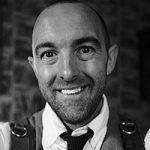
“I’ve been a full-time professional photographer since 2009. It’s all I do: all day, every day. I started out as a family photographer, developing my skills and eye towards to documentary style of photography. I apply that in everything I do. I hope to make every shot be relevant on it’s own with some kind of context, whilst adding up to the greater story. I love what I do and I am pretty good at it (from what I’m told). I live in Dorset on the coast which has been home for all my life.”

